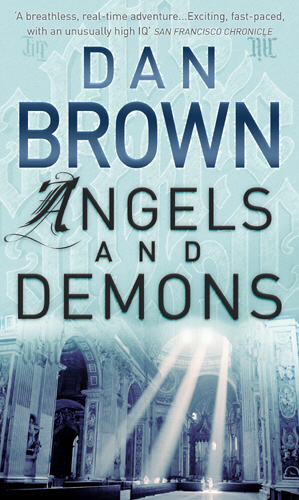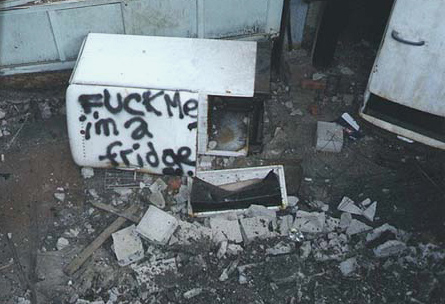There’s an enduring myth that archaeology is an ‘unrepeatable experiment’, a bit like loosing your virginity with a sheep. Or perhaps that description just applies to people with a speech impediment.
‘What do you do?’
‘I’m an Archie… Acheu… I dig up old stuff.’
In fact the term ‘unrepeatable experiment’ was popularised by Phillip Barker in the book that schooled a generation of diggers: ‘Techniques of Archaeological Excavation’. Digging the dirt, or so the story goes, is a form of controlled destruction. Artefacts may be carefully labelled and packaged for study in the laboratory or display in a museum, but the layers of earth in which these objects were found can never be restored, and its this surrounding matrix that holds the key to our understanding. In the very act of digging, archaeologists destroy the thing they love − they are the punks of the scientific community − and out of the wreckage they preserve the past by obsessively recording what they have witnessed.
So far so good, you might think, but perhaps the ‘unrepeatable experiment’ is actually a misnomer – and by over-playing our scientific hand, we have both raised and dashed public expectations of what archaeology can achieve and how it works. A small but vocal minority even suspect we might be making it up, whilst a large but silent majority remain indifferent to whatever it is we do make up. So far so bad.
 The problem with archaeology is that our conclusions can never be proven in a laboratory. This has played directly into the hands of the flat-earth people, who believe that because nothing can be know with certainty, all interpretations are equally valid. But just as there are many different scientific subjects, there’s more than one way to do science, and it’s this that gets confused by ‘the unrepeatable experiment.’
The problem with archaeology is that our conclusions can never be proven in a laboratory. This has played directly into the hands of the flat-earth people, who believe that because nothing can be know with certainty, all interpretations are equally valid. But just as there are many different scientific subjects, there’s more than one way to do science, and it’s this that gets confused by ‘the unrepeatable experiment.’
Archaeology is a historical science (like astronomy or geology), rather than an experimental science (like physics or chemistry), and the difference lies in how those two branches reason with their evidence. Experimental science uses a ‘w-n’, or why-necessarily approach to its subject matter. Why does something happen? It necessarily happens in this specific way – something that other scientists can independently verify. But a historical science can’t be tested in the traditional manner. It has to account for as much evidence as possible while remaining true to our expectations of how the world works today.
 This can be extremely difficult, especially when moving back into the further reaches of prehistory where we find objects and behaviours with no modern parallels (unlike this recently discovered domestic appliance).
This can be extremely difficult, especially when moving back into the further reaches of prehistory where we find objects and behaviours with no modern parallels (unlike this recently discovered domestic appliance).
Rather than a ‘w-n’ methodology, archaeologists must adopt a ‘h-p’, or how-possibly approach to the evidence. How did it happen? It possibly happened like this, and by drawing on many different types of evidence – artefacts, ecofacts and scientific analysis such as radiocarbon dating – statements can be verified by how well they conform to the results of other excavations.
But this isn’t the only concern that archaeologists must confront. In the age of the da Vinci Code, we also need to be acutely aware of how our stories play out on the multi-media stage, and here again the odds are stacked against us. Whereas an experimental science will aim to reduce meaning into a simple formula (such as e=mc2), a historical science will be complex by nature, and to the wider public this can itself seem unscientific. If the fascinating complexity of human history can be simplified to a single back story of Atlantian priests, then in many ways that reduction conforms to the expectations we ourselves raised in the public when we branded archaeology an experimental science. Archaeology is not an experiment, but it is profoundly difficult. The challenge is to balance the credibility of the excavated evidence with a democratically accessible narrative. To neither dumb-up our investigation, nor dumb-down our results.
My mission, should I choose to accept it…


>I've always been uncomfortable with archaeology as science. I think it belongs in the Humanities. Digging up dead people was never scientific for me. The first burial I ever excavated was of a 2-year-old girl who was interred next to her 4-year-old sister. They died within two weeks of each other. I am less interested in the physiological characteristics of the deceased and more intrigued by their story – as human beings.
>Thanks for the comment Candace. Yes, I know what you mean. When it comes to excavating skellies, it sometimes feels as though our scientific methodology (not to mention the unruly gallows humour of the site hut) distances us from what could otherwise be a truly horrifying experience. The contemplation of people, death and by extension, our own mortality.
But I think archaeology is both a humanity and a science. Aside from a poetic imagination (of which I'm sure you have plenty!), we depend on science to provide us with a basic currency of understanding – unmoved by the highs and lows of fluctuating opinion.
The problem I'm trying to address here is the one-dimensional vision of science, which polarises archaeologists into a strong 'arts' or strong 'science' position. I'm reminded of the response Glynne Daniels was purported to have given to the 'Binford/Hodder is archaeology an art or a science question?'
'Neither', he said. 'It's simply a pleasure.'
>It is indeed a pleasure. Unless you are in the desert…in August…when it's 100 degrees.
>100 degrees in August!?
Sunned off to our rained off!
https://www.diggingthedirt.com/2009/08/riders-on-storm.html
>Well, I've certainly an opinion on this, and it sides with both of you, and neither of you respectively. Allow me to explain….
Candace, I agree with your assertion that when dealing with human remains we must, as archaeologists, consider not the substance of their shuffled-off mortal coils but the substance and condition of their lives, and how it is that they come to be in our care. Bravo for saying it. Though, in fair return, I believe more archaeologists need to adopt – not just the anthropological perspective – the ethnographic method and the practice of self-identification in their academic writing. Anthros and Archaeo sorts all tend to commit the cardinal sin of forgetting, in their academic retelling, that they are storytellers. The mood and tone of the story, as much as the context, can be heavily influenced by the personal mores and memes of the teller, and as such the storyteller should actively seek to understand and implicitly state their biases.
On the other hand, and in ways siding with our Mr. Digging, I disagree wholeheartedly with your assertion that archaeology not be a science. Indeed, after studying human osteology at length – in a lab atmosphere, with a skeletal collection, and being tested on it – any archaeologist with a decent memory, the ability to side, sex, and type bones has an understanding of the human functional structure that far exceeds the knowledge of any osteopathic doctor. If you don't believe me, sit down with one and have a conversation. I did this at the University of Alberta Hospital and found out that we do, indeed, know much more than they do. The reason for this is because we only ever get "skellies". We don't get to see the soft tissues, and if we do, they're largely calcined or in an advanced state of decomposition. As such, our study of the human skeletal structure is much more advanced.
In following with this, archaeology the science, paired with such an advanced understanding of hard human remains, gives us a unique lens through which to study the lives of those whom we encounter interred in the earth. If retroactive-ethnography is the prose in which we write the story of their lives, then firm and specific scientific application is the lens by which we peer into their lives. With only a skellie, a perceptive and studied mind can determine means of death, diet, lifestyle, pathology, history of injury, profession, origin, and in some cases ethnicity and number of offspring with certainty. That's just the skellie; if you expand the view to the surrounding soil composition, and so on, you gain a much clearer image of the person's life.
Just my two-pence.